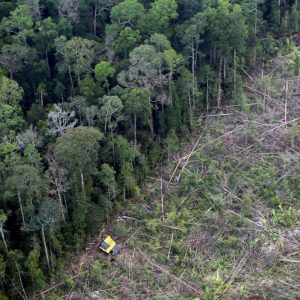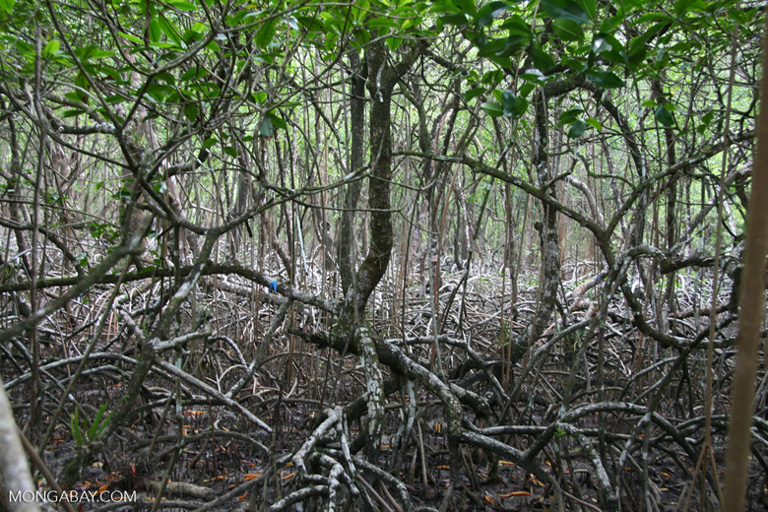How Forests, Farms, and Fields Can Become a Net Carbon Sink in 20 Years
A new study finds that the land sector could account for nearly one-third of the climate mitigation necessary to keep global temperatures below a 1.5-degree-Celsius (2.7-degree-Fahrenheit) rise over pre-industrial levels as referenced in the 2015 Paris climate accords.

This story first appeared on Mongabay
1 November 2019 | Overhauling how humans manage Earth’s surface could account for the equivalent of 15 billion metric tons (16.5 billion tons) of CO2 every year through a combination of lower emissions and higher sequestration, according to a new report.
That amount of carbon is almost a third of what we need to mitigate by 2050 to keep the global temperature rise under 1.5 degrees Celsius (2.7 degrees Fahrenheit) above pre-industrial levels, scientists say.
“Coming on the heels of historically high summertime temperatures, and in the wake of reports sounding alarms about the state of our forests and food system, this report highlights land-based climate solutions — what to do where, and by when — that are feasible now and deliver many other benefits,” Stephanie Roe, an environmental scientist at the University of Virginia and the study’s lead author, said in a statement.

In a paper published Oct. 21 in the journal Nature Climate Change, Roe and her colleagues pulled together research on the predicted impacts of various strategies involving the “land sector” aimed at winnowing down emissions and removing existing carbon dioxide from the air. Their recommendations serve as a roadmap for avoiding the dangers of unchecked climate change, they write.
Among the most important steps in the next decade or so are cutting deforestation and the loss of peatlands and mangroves by 70 percent, bringing back those ecosystems in places where they’ve been lost, and increasing the use of techniques like agroforestry to integrate trees with food crops. The authors also say that bolstering carbon storage capabilities in agricultural soils and human behavior change — such as eating less meat and cutting food waste — are also priorities.
The team figures that putting all of these measures in place would account for up to 30 percent of the contributions necessary to remain below that 1.5-degree threshold laid out in the 2015 Paris climate accords. In particular, moves by just a handful of countries, including the United States, China and the members of the European Union, will go a long way toward meeting this benchmark, as will efforts by Brazil and other tropical countries.

Following the authors’ prescriptions would make the sector carbon neutral on balance by 2040. And 10 years after that, land uses could be pulling more CO2 from the atmosphere than they put out, the team writes. But these actions aren’t only about slowing changing climate, Pete Smith, a biologist at the U.K.’s University of Aberdeen and one of the co-authors, said in the statement.
“Protecting forests, for example, provides cleaner air and water, more food, improved livelihoods, more biodiversity and resilience to climate extremes,” said Smith, who was also a lead author of a recent report released by the Intergovernmental Panel on Climate Change. “These multiple benefits are a real selling point for land-based climate solutions.”
Lately, however, trends haven’t been moving in the right direction, especially on forest protection, Charlotte Streck, who directs the think tank Climate Focus, said in the statement. Deforestation has risen by more than 40 percent in the five years since 200 countries, companies and organizations signed the New York Declaration on Forests in 2014, according to a 2019 report that Streck co-authored.

“What’s worrisome is the large gap between where we are and where we need to go to avoid climate chaos,” said Streck, also a co-author of the Nature Climate Change study.
Bridging that divide requires limiting emissions along with siphoning some of the CO2 that’s already in the atmosphere, Roe said, which will mean finding technological solutions to complement moves like forest and peatland restoration.
“The land can [do] and already does a lot, but it can’t do it all,” Roe said. “Research and investment in negative emissions technologies today will be critical for assisting in their sustainable deployment in the future.”

The drastic rebalancing of atmospheric CO2 necessary to avoid a future with average temperatures higher than 1.5 degrees Celsius above pre-industrial levels will likely require methods such as the direct air capture and storage of carbon from the atmosphere and finding ways to implement the controversial bioenergy with carbon capture and storage, or BECCS, approach without causing problems for human health, biodiversity or water supplies.
On top of investing in a wide array of strategies, Roe said that acting quickly is also vitally important to keep a lid on climate change.
“[T]he window of opportunity is getting smaller,” she added. “The longer we delay action, the lower our chances of achieving Paris Agreement goals, and the higher the burden we put on our natural and food systems.”
Banner image of a mix of mangroves and oil palm in Malaysian Borneo by Rhett A. Butler/Mongabay.
Roe, S., Streck, C., Obersteiner, M., Frank, S., Griscom, B., Drouet, L., … Lawrence, D. (2019). Contribution of the land sector to a 1.5 °C world. Nature Climate Change. doi:10.1038/s41558-019-0591-9
Please see our Reprint Guidelines for details on republishing our articles.

